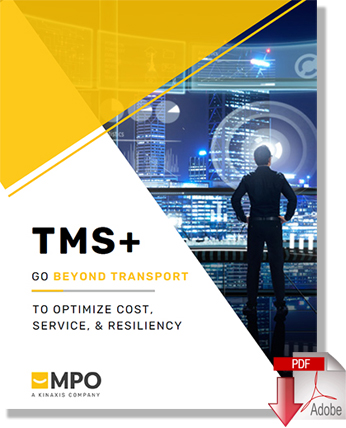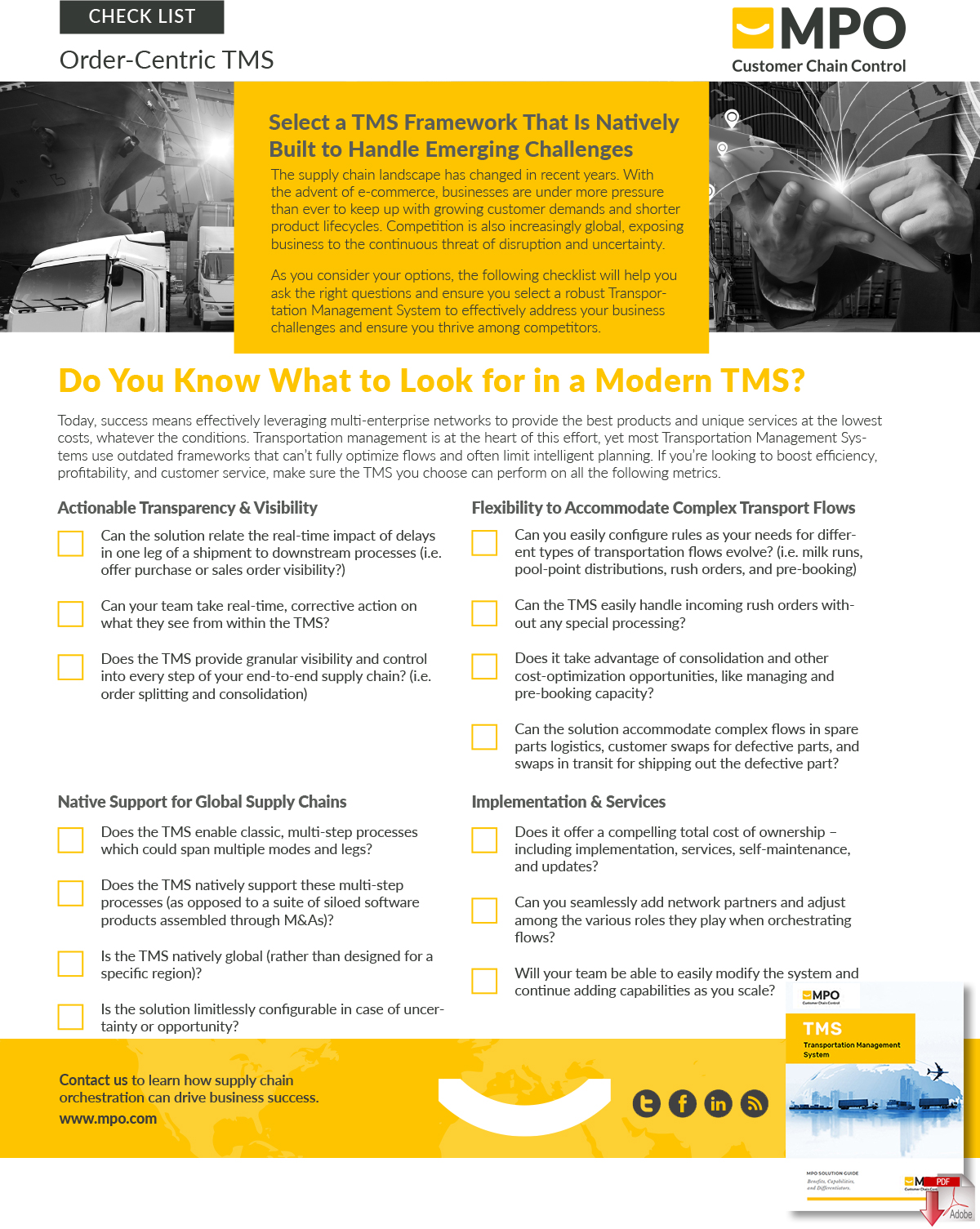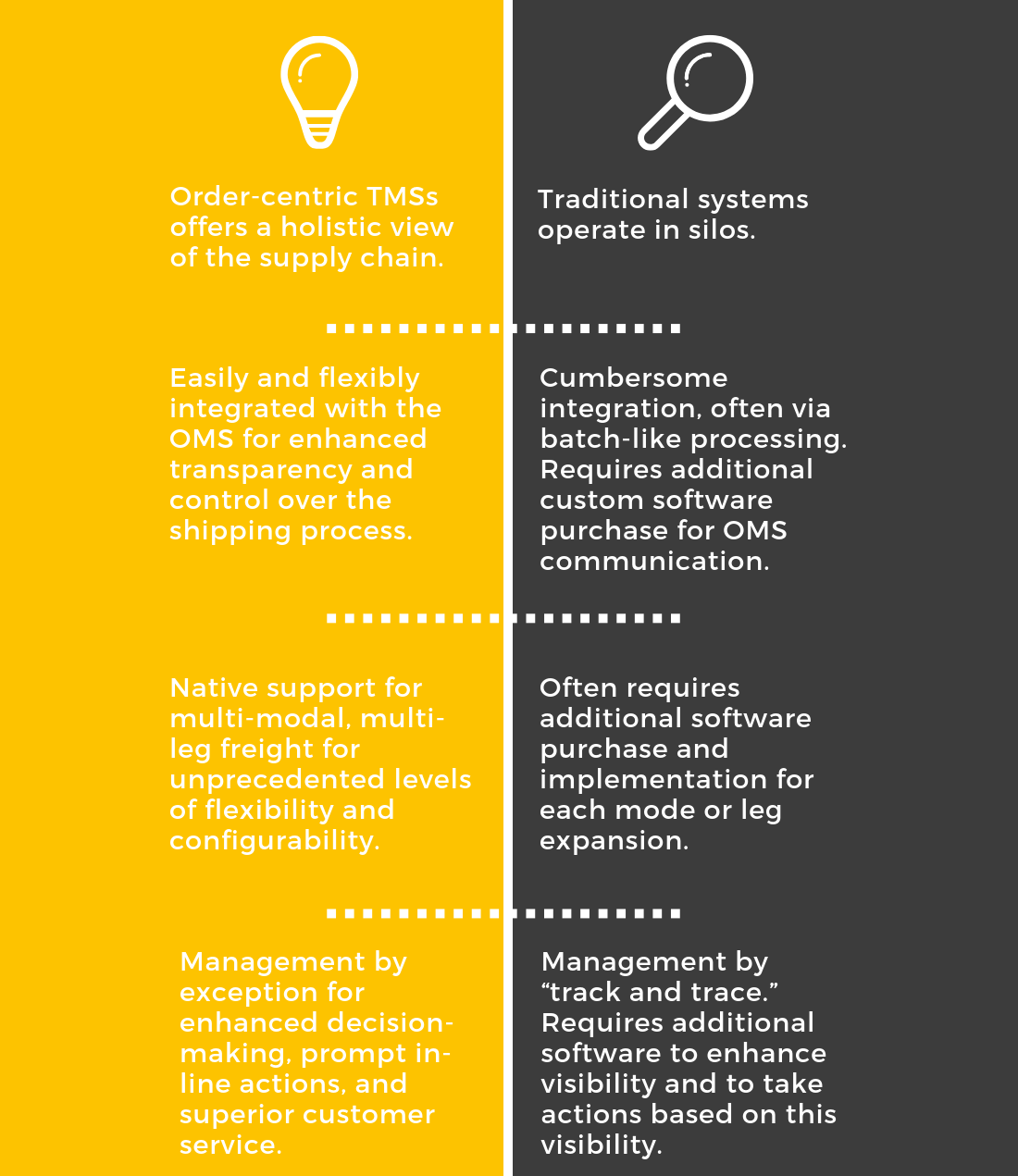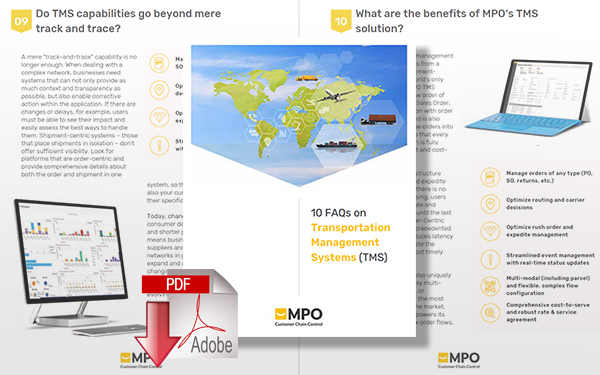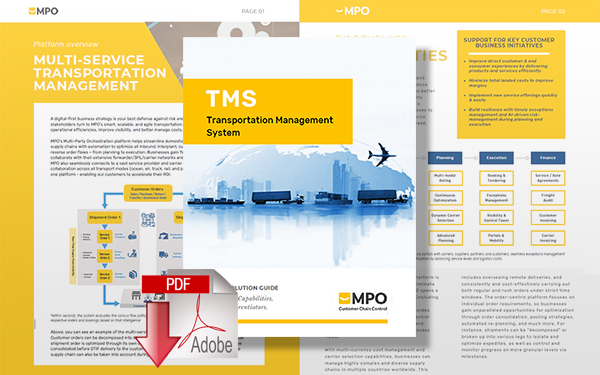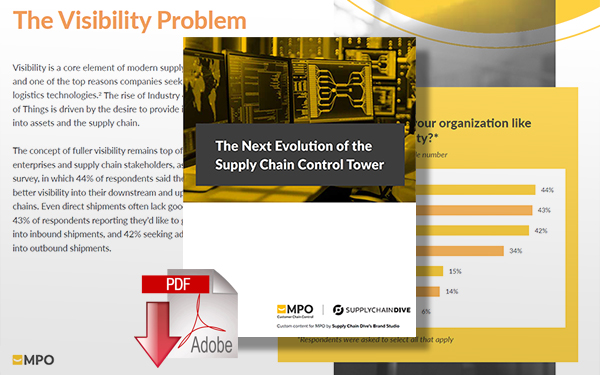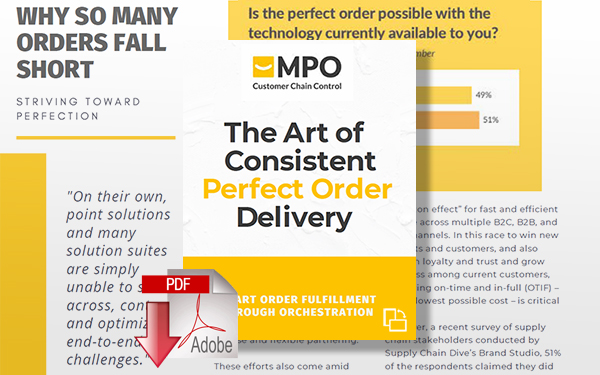Top Trends Driving Change and Technology Strategy Within Logistics & Transportation Management

In this educational and informative article, we discuss, via a Q&A, some of the key industry trends driving process change and technology strategy within logistics and transportation management.
A Volatile, Disruptive, and Resilient Supply Chain
Resiliency has been top of mind for leaders who are increasingly prioritizing the supply chain as a value driver for business success and customer loyalty.
But what does it mean to have a high-performance supply chain in a volatile and disruptive market?
And are the transportation management solutions that have traditionally served logistics teams in the past capable of supporting today’s unique challenges?
Here, I’ll discuss some of the key industry trends driving process change and technology strategy within logistics and transportation management.
Logistics Management Q&A
What are some of the key trends taking shape right now in the logistics management environment?
A big trend taking shape these days in logistics management is the unification of ecosystems. Most businesses today operate as multi-party networks – each with its own teams, processes, and systems. When disruption became acute and common, businesses began realizing their siloed systems were putting them at a disadvantage in managing complex international inbound, trans-loading facilities, distribution centers, and omnichannel customers.
Another trend is one I refer to as “inventory execution,” or making the most of what you have in the current climate of uncertainty and disruption. Inventory used to be managed at the planning level only. With recent parts and product shortages and volatile demand, businesses are scrambling to keep all tiers of customers satisfied and get the popular finished products to the right places at the right time.
At the same time, they also need to create pathways for newly obsolete products. It’s motivating companies to replace manual processes with automated and intelligent business rules that centralize data from multi-tier suppliers and multiple warehouses to enable optimal order allocation based on available inventory, including inventory in transit.
With the assurance of supply being a major concern, many companies are walking a tight balance between having safety stock and mitigating the cost of excess inventory. To that end, we’ve partnered with logistics service provider AFS and financial technology business provider Taulia, now part of SAP) to offer an alternative approach to network inventory management.
AFS will carry inventory for their customers, using the; MPO supply chain control tower for visibility and management, and leverage the global footprint of warehouses to take inventory off their customers’ and suppliers’ balance sheets. It differs from the VMI approach in that it leverages bank-based financing at what are still exceptionally low-interest rates and therefore a reasonable cost base.
What are the key challenges shippers are facing in today’s fast-changing environment?
Shippers today are managing rising logistics costs, strained capacity, and pressure to deliver on tight deadlines and high customer service levels amid regular delays and disruptions. That’s a lot to juggle.
Operational excellence means mitigating risk and being able to identify exactly where and when a problem is occurring, as it’s happening, and being able to act fast to resolve it. In the past leaders had time to run and analyze reports before taking action. Today that process is too inefficient and often leads to costly expedites or significant drops in on-time and in-full deliveries.
How does a Transportation Management System help a company keep pace in light of these challenges?
Transportation Management Systems (TMS) capture the most up-to-date information from diverse sources, including ERP orders, carrier updates, warehouse capacity, weather data, and other risk signals.
The TMS can be displayed graphically in morning meetings so teams can steer the ship in the right direction; depending on how broad the capabilities, steering can even occur across the full order lifecycle, from order allocation to last-mile delivery. A TMS also notifies teams immediately about milestones and exceptions so they can have real-time visibility and agile responses before minor snags become bigger problems or trends.
When selecting a transportation management solution, it's common for teams to focus too narrowly on improving specific pain points rather than thinking more broadly about how complexity is impacting the business goals of the company at large and how a solution might support other functional challenges or support future growth.
Remember that today's challenges will not necessarily reflect tomorrow's challenges and not all transportation management systems are created equal. Take the time to audit your organization cross-functionally to select a TMS solution that is future-proof for long-term success.
How can MPO help shippers tackle some of these current logistics challenges?
MPO offers a TMS+ which is a solution that goes beyond traditional transport management, empowering businesses to optimize logistics. The TMS+ unifies the ecosystem so teams can orchestrate orders between multiple manufacturing sites, distribution centers, and sales channels, effectively monitor the process, resolve exceptions, and manage carrier costs and performance across inbound, outbound, and return order flows – all on a single platform.
Businesses can also manage critical processes, like inventory execution and multi-modal execution, including parcel, which is essential given current customer buying behaviors. What’s also valuable to our customers is that these capabilities are native and flexible – not siloed – so they can really take command of their modern business complexities and gain a competitive edge.
A Future-Focused Transportation Management Technology Strategy
These capabilities are valuable but barely scratch the surface of what supply chain management platforms can do to support not just individual business units but the whole supply chain network. A standalone transportation management system can suggest reroutes, but a combined TMS and OMS platform can suggest alternatives that incorporate all the resources and capacities within the network.
Transportation management systems can help mitigate risk and build resilience when exceptions occur that threaten your bottom line. Expanded service levels and communication between silos also make it possible to improve flows that have become segmented. With integrated Transportation and order management (or an order-centric TMS), businesses can provide high service levels and a seamless customer experience.
The MPO Transportation Management System can help you embrace supply chain complexity and truly build resilience.
As a multi-modal, holistic solution, businesses can continuously optimize inventory, orders, and transport across inbound, outbound, and reverse flows, with cost-to-serve calculations that go beyond transportation management.
Comparing 2 Types of TMS - Order-Centric versus Traditional
Transportation management constraints are expected to change over time - new partnerships are just one reason to develop operations designed to scale and adapt. Even positive changes pose operational challenges. That’s why flexibility is the single most important factor to look for in a transportation management system. Endless possibilities could affect order fulfillment, and, because variables are constantly changing, a unified platform is the only way to solve the challenges associated with such complexity.
Want to learn more about what a combined TMS - OMS platform can do for you? Otherwise known as an order-centric transportation management system, the supply chain cloud platform ensures you optimize not only individual order execution but order planning as well. It also allows logistics teams to optimize across silos, both within their organization, as well as across the entire multi-party ecosystem.
Download the solution guide below for more information about benefits and capabilities.
You can also get in touch by reaching out to [email protected], [email protected], or requesting a demo today
About the Author

Will Chang is a seasoned Account Executive for NA and LATAM at MPO, a Kinaxis Company. Chang develops complexity and volatility into controlled orchestration. He improves control and visibility of all inbound, outbound, and return orders for any organization that has realized that previously used technologies and processes with silos are obsolete.

